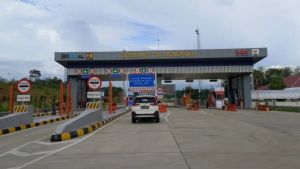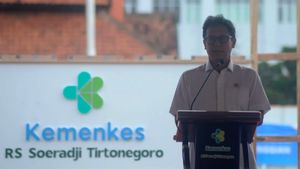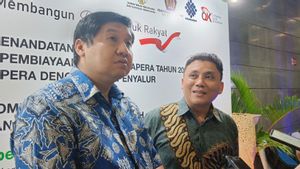JAKARTA - Amid the sad news that is currently hitting Indonesia over the downing of the Sriwijaya Air SJ-182 plane. It seems that airlines and aircraft manufacturers continue to develop a number of technologies in safety facilities.
This is due to careful checking and consideration of the safety of the technology used by aircraft, from aircraft seats to cabin air. Thanks to these technologies, planes can travel safely.
Here are five technologies used to keep planes safe as reported by Earthnetworks.
1. Spar wings
The spar is one of the main support structures of the wing. Spar itself withstands the greatest load from takeoff, cruising altitude and landing, and connects the wing to the fuselage (fuselage). When the wing spars fail, the plane may crash.
The crew used ultrasound to monitor the wing spars as well as the fuselage skin to check for early signs of failure. The newest technology to avoid the wing spar problem is the resin-filled nanostructures.
If engineers embed these structures into wing spar material, they can patch the cracks as soon as they form. This is the key to protecting everyone in it.
2. Aircraft wheel bearings Apart from the wings, aircraft wheels are also a very important safety component. Wheel bearings support the entire weight of the aircraft on a surface of only a few square inches.
Apart from the wings, aircraft wheels are also a very important safety component. Wheel bearings support the entire weight of the aircraft on a surface of only a few square inches.
During landing, the wheels accelerate from 0 to 2,000 rpm in less than a second. Wheel bearing safety features must comply with codes to ensure safe landing for passengers and crew.
The newest ball bearings are made from a new ceramic formula. These bearings can better withstand the changes in temperature and physical stress caused by landing an aircraft.
3. Weather warnings The next important technology for crew and passenger safety is weather warning. Bad weather greatly affects all aspects of airport operations. Industry professionals can protect crew and passengers with weather data products and services; including warnings.
The next important technology for crew and passenger safety is weather warning. Bad weather greatly affects all aspects of airport operations. Industry professionals can protect crew and passengers with weather data products and services; including warnings.
One very important warning to have is a lightning warning. This technology can provide alerts when there is lightning in the clouds and also help predict wind shifts, bursts and hail.
4. Model-X airport surface detection equipment

The rest of the technology is on the side of the control tower. The model-X airport surface detection equipment basically creates an up-to-date map of all airport traffic.
This is done by integrating data from incoming aircraft IPK units and transponder signals from ground vehicles and other aircraft in the air. That way, the pilots know everything that's going on around them.
5. Cockpit digital map

The last technology that must be used to keep passengers safe is the cockpit digital map. These digital maps kept pilots out of trouble and were more reliable than the paper maps of the past.
This map of the airport and surrounding area is easier to use and includes new constraints and infrastructure. All pilots must carry Electronic Flight Bags that plug into the cockpit navigation system. There is a warning too which ensures pilots should always update their maps when connected to a Wi-Fi network.
The English, Chinese, Japanese, Arabic, and French versions are automatically generated by the AI. So there may still be inaccuracies in translating, please always see Indonesian as our main language. (system supported by DigitalSiber.id)











